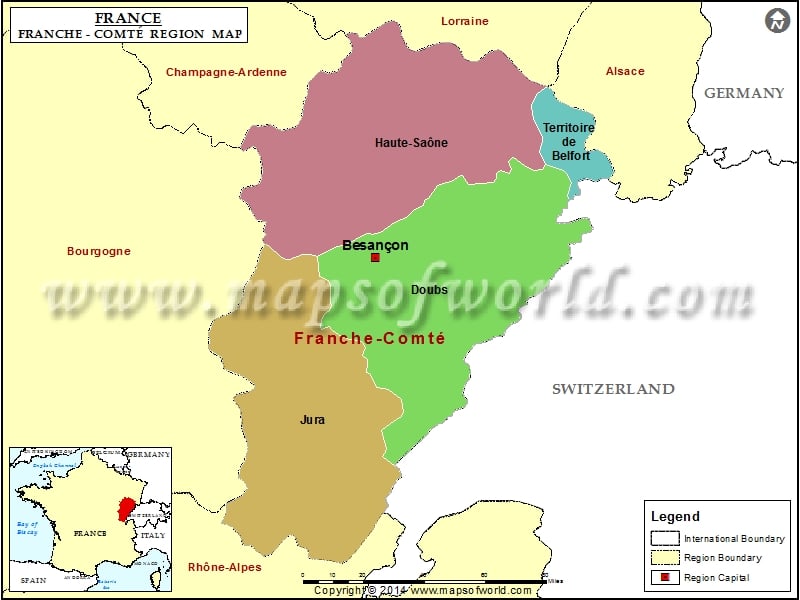General Overview
The Franche-Comte region is a lesser known region of France. It is located in the Eastern part of the country and has traditionally served as a buffer state between Switzerland and Burgundy.
Today, it includes the departments of Doubs, Jura, Haute-Saone, and Territoire de Belfort and covers an area of 16,202 sq kms. The region had a population of 1,168,208 in 2009. The region consists of a variety of landscape and the wild beauty is now attracting tourists in increasing numbers to this region of France.
Franche-Comte is bounded by Rhone Alpes to the south, Alsace and Lorraine to the north, Champagne-Ardenne to the northwest, Burgundy to the west, and Switzerland to the east. The capital is Besancon.
Weather
The Franche-Comte region has a continental type of climate. Summers are hot while winters are long and cold. The region is bounded by the Vosges to the north and the Jura to the south. This has helped in creating a vast diversity in the climate of the region. Snowfall is heavy during winter and several winter sports have become popular. Humidity is high and the region also receives moderate to heavy rainfall. This climatic condition has helped in luxurious growth of vegetation and has also supported wine cultivation. In comparison, fall and spring are mild with a number of sunny days.
Geography
The Jura Mountains lie in the southern part of the region and dominate its geography. These mountains also exercise considerable influence on the climate. These mountains rise to a height of 1,495 meters in the Pela Ridge. The region is also marked by a number of gorges and waterfalls as well as forested areas. Another important geographical feature of the Franche-Comte region is the beautiful lakes which offer perfect condition for swimming. Several rivers flow through this region like Doubs, Loue, and Lison. Forestry, dairy, cattle farming, and manufacture of clocks, furniture, and toys are the traditional activities of this region.
History
Signs of habitation in the Franche Comte region can be traced back to the Paleolithic age. The region was settled by the Gauls and was little affected by Germanic migration. In the 5th century it was a part of the Alemanni, and later it became a part of the Kingdom of Burgundy. The region came under different rules including the Holy Roman Empire at different times, but it remained distinctly separate from the neighboring Duchy of Burgundy. It finally became a part of France in 1678.
Language
The language spoken here is called Franc-Comtois and is recognized as a language of France. It includes two dialects – the Langue d’Oil and Arpitan.
Tourism
The beautiful scenery has helped to attract tourists in this region of France. The Region des Lacs with its nine spectacular lakes is a major attraction. Hiking is well developed in the forested slopes of the Vosges while the Jura Mountains also offer opportunities for hiking and skiing in winter. Wine and cheese tasting are other popular tourism activities here. The region is also the birthplace of several famous personalities including the writer Victor Hugo.

